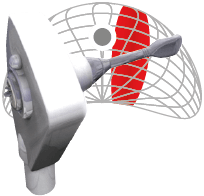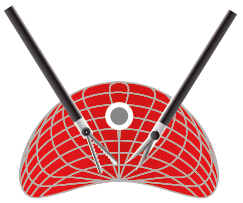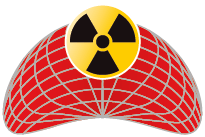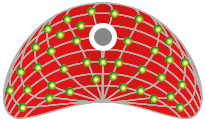Treatments for Localized Prostate Cancer
Localized prostate cancer (at stages T1 and T2) can be treated using a variety of methods, depending on the characteristics of the disease and the patient’s preferences.
Active Surveillance
When prostate cancer is localized with low risk of evolution, an active surveillance strategy can be proposed. It aims to delay treatments and side effects associated with (urinary incontinence and erectile dysfunction). Medical check-ups will be set at regular intervals (PSA blood test, rectal examination, MRI and prostate biopsy) and a specific treatment will be prescribed as soon as a progression of the disease is detected (according to therapeutic options detailed below).
HIFU (High Intensity Focused Ultrasound): the non-invasivetreatment, incisionless and radiation free
HIFU treatment involves destroying cancer in the prostate by destroying the cancerous cells with focused ultrasound.A probe is inserted into the patient’s rectum under spinal or general anesthesia. The probe can both visualize the prostate and generate focused ultrasound. Treatment can be total (whole prostate is treated), partial (part of the prostate is treated) or focal (only the prostate area affected by the cancer is treated). With focal treatment, the physician will determine the area to be destroyed thanks to the elastic fusion of the diagnostic images (MRI or biopsy) with the real-time ultrasound images allowed by the probe. HIFU treatment lasts between 1:30 and 2:30 and can be performed on an outpatient basis or with a short stay in hospital (1 or 2 nights). This non-invasive technique preserves patient’s quality of life by decreasing the side effects associated with conventional radical treatments (incontinence and erectile dysfunction).

Radical Prostatectomy – Surgery
Radical prostatectomy (or total prostatectomy) involves surgically removing of the prostate and the seminal vesicles. It is a major surgery under general anesthesia which requires one or more incisions (cutting of the skin and tissues to reach the organ) according to the technique used (open abdominal or laparoscopic prostatectomy). Hospitalization time varies between 5 and 7 days, then it takes about 3 to 4 weeks to recover. The main side effects are impotence (inability to have or maintain an erection) and incontinence (inability to retain urine).

External Radiotherapy – X-ray Treatment
The patient is subjected to high-dose rays directed at the prostate. These rays destroy the cells by causing lesions in their DNA. The treatment is divided into approximately 40 sessions over a period of 6 to 8 weeks, working on the basis of a five-day week. During each session, which lasts around 20 minutes, the patient remains immobile on the treatment table while the machine delivers the rays. The treatment is painless. The main side effects are impotence (i.e. an inability to achieve or maintain an erection), which can occur even several months after treatment, and intestinal disorders such as pain, colic and bleeding.

Curietherapy, Radium Therapy or Brachytherapy – Radioactive Implants
Radium therapy, also known as brachytherapy, involves temporarily or permanently implanting between 50 and 100 tiny seeds of radioactive material into the affected area. These seeds constantly emit rays that destroy prostate cells by causing lesions in their DNA. This procedure is performed under general anesthesia. When implanting the seeds, the surgeon is guided by an ultrasound scanner (with a probe inserted into the patient’s rectum). The potential side effects are essentially the same as with external beam radiotherapy.

Cryotherapy – Cold-Based Treatment
Cryotherapy is a technique that freezes the prostate by inserting needles that generate temperatures below 0°C. The operation is performed under spinal or general anesthetic. When implanting the seeds, the surgeon is guided by an ultrasound scanner (with a probe inserted into the patient’s rectum)

Treatments for Advanced Prostate Cancer
Hormone Therapy
Hormone treatments are used for patients with cancer that extends beyond the limits of the prostate. Hormone treatment does not cure the cancer, but decreases the quantity of male hormones, especially testosterone, which in turn slows the disease’s progression. Testosterone, which is produced by the testicles, stimulates the proliferation of cancerous prostate cells. The effect of hormones on prostate cancer is only temporary, and after around two years on average, patients develop a resistance to the hormones that makes the treatment ineffective.
Chemotherapy
Chemotherapy is used to treat patients who have resistance to hormones. This treatment decreases tumor growth and can also decreases pain related to cancer. The care team determines place and days of treatment, as well as the drugs used, according to the patient’s choices. Total duration of the treatment is variable. It takes place by successive cures. Drugs are more often injected by infusion. Chemotherapy usually takes place in a healthcare institution (hospital or clinic) on an outpatient basis. Associated side effects are those of any chemotherapy (nausea, vomiting, fatigue, loss of hair, loss of appetite …).
Radiotherapy – X-Ray Treatment
In patients with metastatic cancer, radiotherapy can soothe the disease’s symptoms and contain its spread.
